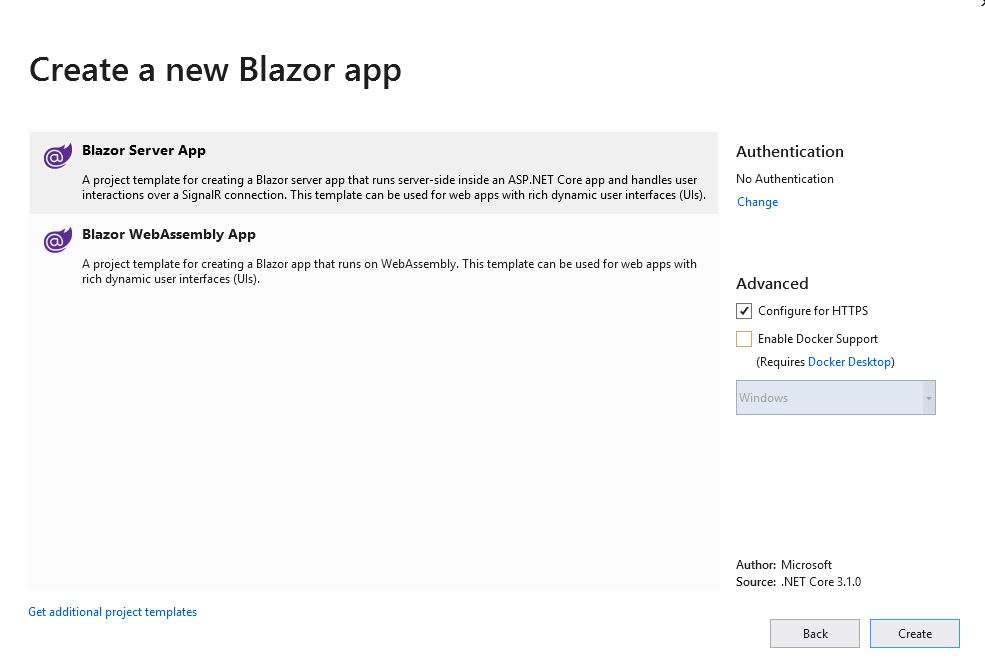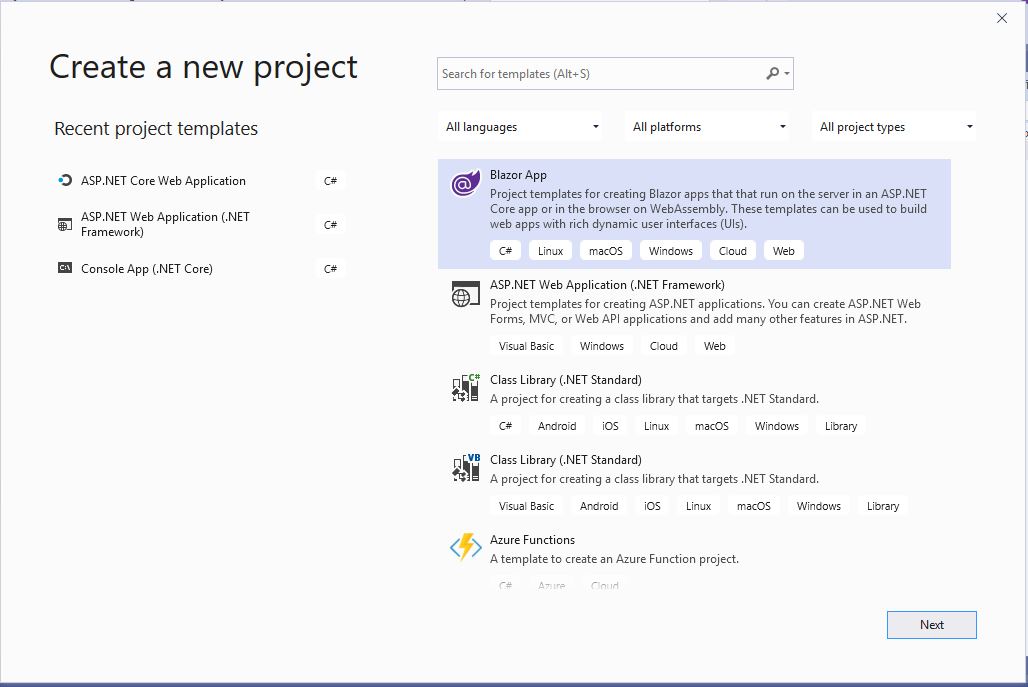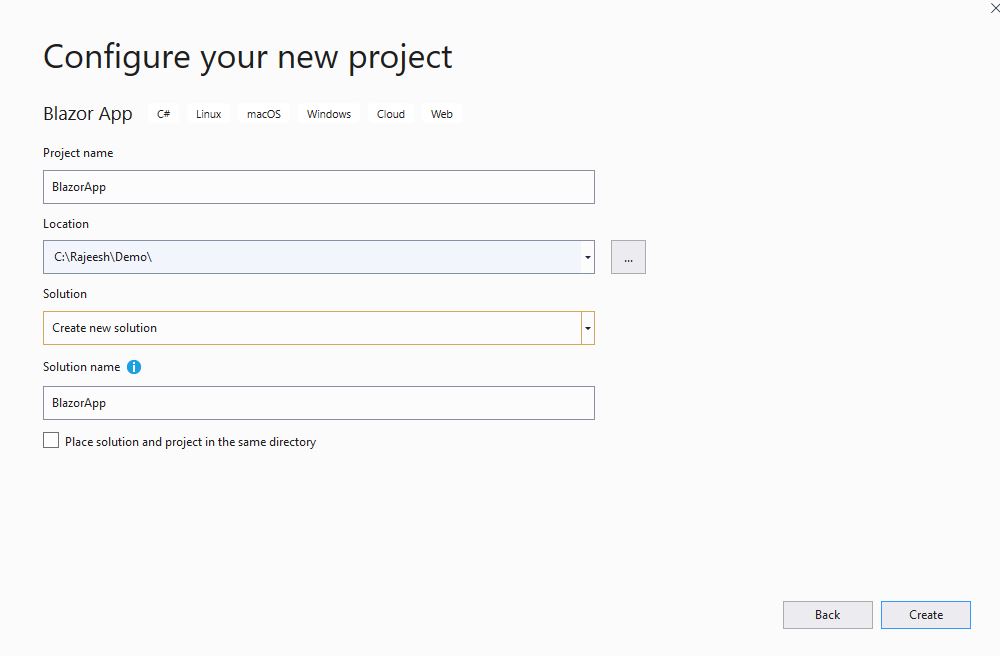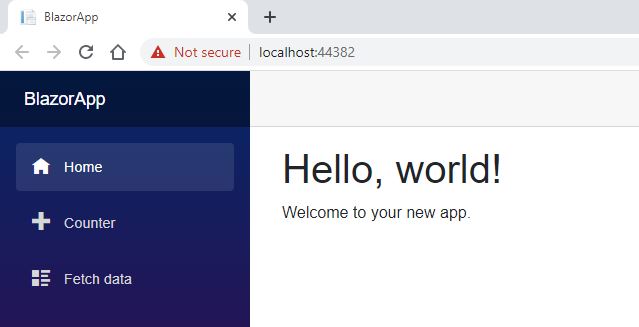Blazor : An Overview Of Microsoft Single Page Application
Introduction
We have developed many Single Page Applications using Angular, Aurelia, React, etc. Finally Microsoft has introduced Blazor Apps, a programming framework to build client side rich web applications with dotnet using C#. What ? Is it possible to create a Single Page Application using C# without using JavaScript ? Yes, we can create a rich interactive User Interface ( UIs ) using C# instead of JavaScript and also the client and server code logic has been written in the app using .Net. So as a dotnet developer we can develop a Single Page Application ( SPA ) using Microsoft C#.
Blazor app has five different editions and two are now available in Visual Studio, and three editions are in the planing stage.
- Blazor WebAssembly
- Blazor Server
- Blazor Progressive Web Apps (PWAs)
- Blazor Hybrid
- Blazor Native
The following are the currently available Blazor apps.
Blazor WebAssembly
Blazor WebAssembly is a single-page app framework for building interactive client-side web apps with .NET ( dotnet ). Blazor is running client-side in the browser on WebAssembly and the client side code has been written in C# instead of using Javascript. So the .Net code is running inside the browser with the help of Webassembly(abbreviated wasm). Yes , it will work with all the modern web browsers, including mobile browsers. There's no .NET server-side dependency but the app is fully functional after downloading the .Net runtime to the client. This will create a client-side dependency and serverless deployment scenarios are possible because ASP.NET Core web server isn't required to host the app.
As per the Microsoft information "Blazor WebAssembly" is still in preview and expected to go live by May 2020. So it is clear that Blazor WebAssembly is not ready for the production use and is currently in a development stage. If you’re looking for a production solution, then you can choose "Blazor Server" and it is recommended by Microsoft.
Blazor Server
Blazor Server provides support for hosting Razor components on the server in an ASP.NET Core app; that means Blazor can run your client logic on the server. The UI updates, event handling, and JavaScript calls are handled over with the help of "SignalR" ( a real-time messaging framework. ) connection. The download size is smaller than Blazor Server compared to Blazor WebAssembly app because those are handling in server side and the app loads much faster. Serverless deployment is not possible because an ASP.NET Core server is required to serve the app.
As Daniel mentioned in the document "We have expect to have official previews of support for Blazor PWAs and Blazor Hybrid apps using Electron in the .NET 5 time frame (Nov 2020). There isn’t a road map for Blazor Native support yet. The following are the Blazor App planning editions".
Blazor PWAs ( Progressive Web Apps )
Blazor PWAs ( Progressive Web Apps ) are web apps that support the latest web standards to provide a more native-like experience. It will work offline and online scenarios and support push notifications, OS integrations, etc.
Blazor Hybrid
Native .Net readers to Electron and Blazor Hybrid apps don’t run on WebAssembly but instead uses a native .NET runtime like .NET Core or Xamarin. It will work offline or online scenarios.
Blazor Native
Same programming model but rendering non-HTML UI.
Note:
The application is tested in .NET Core 3.1 SDK & Visual Studio 2019 16.4 version and all the steps depend on the respective versions.
Prerequisites
- Install Visual Studio 2019 16.4 or later with the ASP.NET and web development workload.
- Install the .NET Core 3.1 SDK.
Step 1
Create a new project in Visual Studio 2019 ( version 16.4 ) and It lists the available project templates. So we have to choose "Blazor App" template for development.
Step 2
Configure new project name, solution name and location in our system.
Step 3
Based on the selected Blazor template ( Step 1 ) It will display the two available Blazor app in Visual Studio. So we have selected "Blazor Server App" from the list.

Output
We can run the application and see the first output of our Blazor Server App.
See Also
The following are basic concepts of ASP.Net Core and It will help us to develop Blazor Applications.
- ASP.NET CORE 1.0: Getting Started
- ASP.NET Core 1.0: Project Layout
- ASP.NET Core 1.0: Middleware And Static files (Part 1)
- Middleware And Staticfiles In ASP.NET Core 1.0 - Part Two
- ASP.NET Core 1.0 Configuration: Aurelia Single Page Applications
- ASP.NET Core 1.0: Create An Aurelia Single Page Application
- Create Rest API Or Web API With ASP.NET Core 1.0
- ASP.NET Core 1.0: Adding A Configuration Source File
- Code First Migration - ASP.NET Core MVC With EntityFrameWork Core
- Building ASP.NET Core MVC Application Using EF Core and ASP.NET Core 1.0
- Send Email Using ASP.NET CORE 1.1 With MailKit In Visual Studio 2017
- ASP.NET Core And MVC Core: Session State
- Startup Page In ASP.NET Core
- Sending SMS Using ASP.NET Core With Twilio SMS API
- Create And Deploy An ASP.NET Core Web App In Azure
Reference
Summary
From this article we have learned the basics of microsoft Blazor Apps With Visual Studio 2019. I hope this article is useful for all the Blazor ASP.NET Core beginners.


